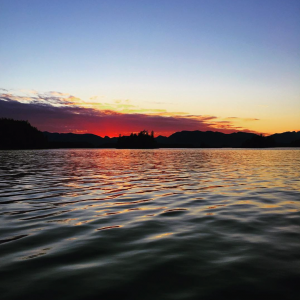Nettle island, located in the Broken Group Islands in British Columbia (B.C) is part of the Tseshaht First Nation reserve. With permission from the Tseshaht, this island played host to myself and ten other undergraduate students as we conducted archaeological field work on a neighbouring island, Jacques Island. The archaeological site on Jacques is called Hup’kisakuu7a, which is thought to be a small Tseshaht village. The site is located on a sloped surface slightly above the modern shoreline. Two 2×2 meter units were excavated. The unit I was assigned too was at the bottom of the slope, which made establishing a symmetrical 2×2 unit somewhat difficult. Upon establishing the units excavations began, going down in 10 centimetre increments at a time. The excavation began slowly, as many of the undergraduate students, myself included had little or no prior archaeological experience. However with each stroke of the trowel our confidence grew, resulting in my unit reaching a final depth of 130 centimetres below datum in one portion of our unit.
This field experience has furthered my appreciation for the other sub-disciplines of anthropology; linguistic, cultural and biological. Knowing place names and the ethnographic history of the area helped me understand the importance of this excavation, despite Hup’kisakuu7a being a small site. This excavation looks to fill a gap in the academic literature as data analysis will reveal the role smaller villages played in Nuu-chah-nulth culture.
Camping on Nettle island also provided a unique learning experience. Skills learnt in this environment included how to tie various knots, the importance of having a tarp over your tent, and how to cook for 15 hungry archaeologists. The latter was no easy task given the standard set by our project cook, Wanda. Wanda’s cooking made wet field days more bearable, as chocolate cake easily cheered up soaking wet archaeologists. Nettle Island also played host to various guest lectures which furthered my academic understanding in a variety of areas such as marine biology, historical ecology and coastal archaeology.
Throughout the course of this influential learning experience, I was in constant awe of the beautiful landscapes that the Broken Group Islands offer. Because of this I have attached my favourite photo from the field, a sunset shot which was taken on the way back from visiting fish traps on Jacques Island. This photo was taken near the end of the excavation and in my opinion, is a perfect send off to the 2016 archaeological field season in the Broken Group Islands.
